#antarctopelta
Text
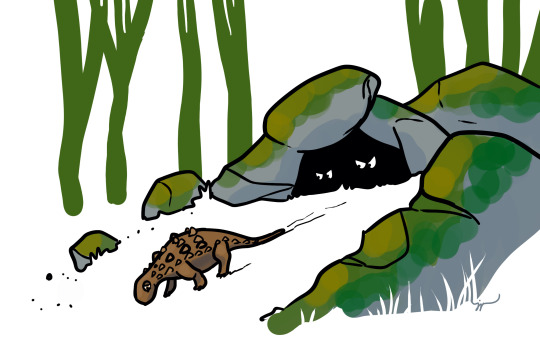
when your buddies kick you out of the clubhouse
735 notes
·
View notes
Text
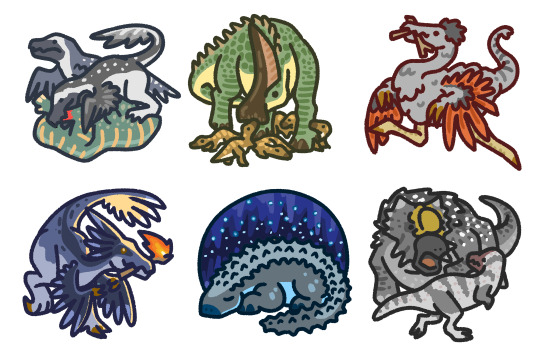
Prehistoric Planet Episode 4 - Ice Worlds
This was my favorite episode so far, what with the goofy bandit Ornithomimus, adorable baby Olorotitans, and the awesome Pachyrhinosaurus/Nanuqsaurus standoff. The real star of the show, however, was the Pyromaniac Troodontid.
#prehistoric planet#prehistoric#paleo#paleo art#dinosaur#dinosaurs#dinosaur art#dromaeosaur#olorotitan#ornithomimus#troodont#troodontid#burn it all down#antarctopelta#pachyrhinosaurus#nanuqsaurus#theropod#ceratopsian#arctic#digital art#funny little guys#my art
341 notes
·
View notes
Text
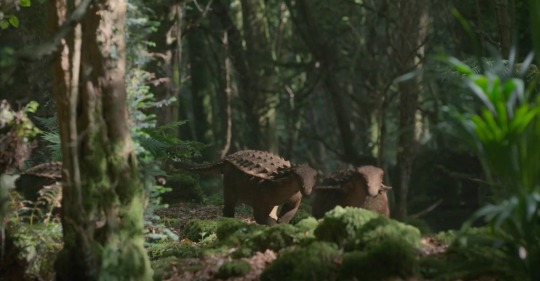
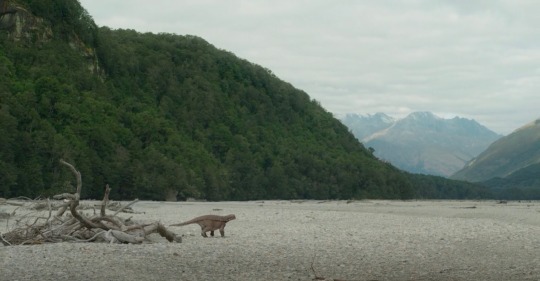
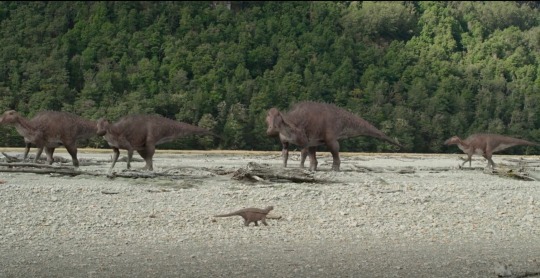
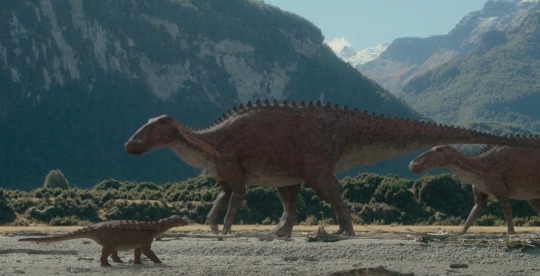


I’m naming him Spud, and he’s my child now. 🦕
#dinosaur#prehistoric planet#Antarctopelta#he’s called Spud#just a lil man#on a lil adventure#I love him sm#that I cried over him
12 notes
·
View notes
Photo
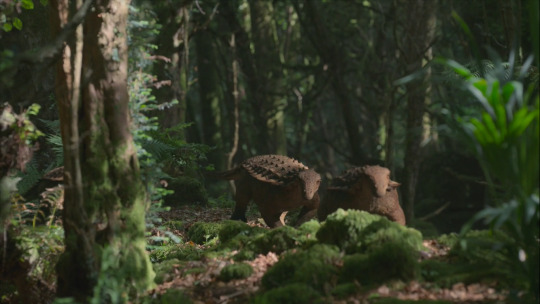




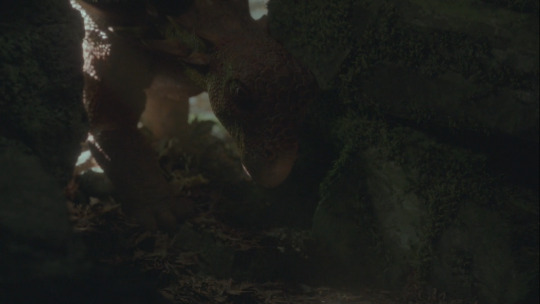

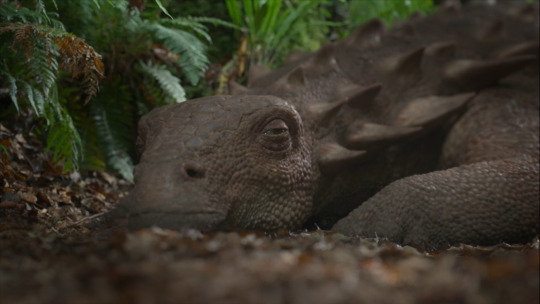
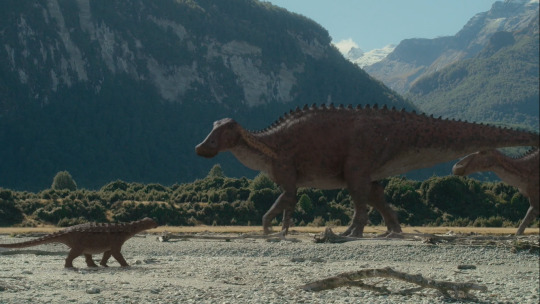
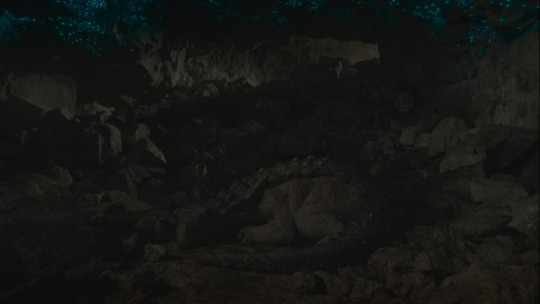
Life of our Prehistoric Planet: Antarctopelta oliveroi.
13 notes
·
View notes
Text
I'm so soft for the little antarctopelta who found his own cave and slept beneath 'strange living stars'
67 notes
·
View notes
Text
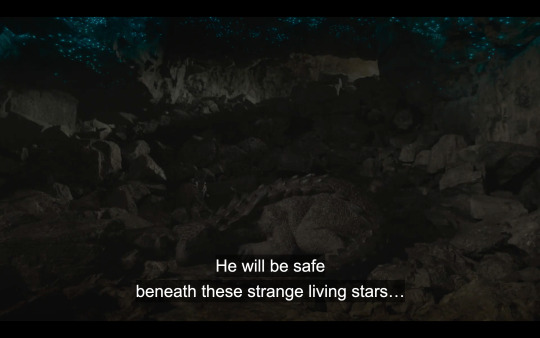
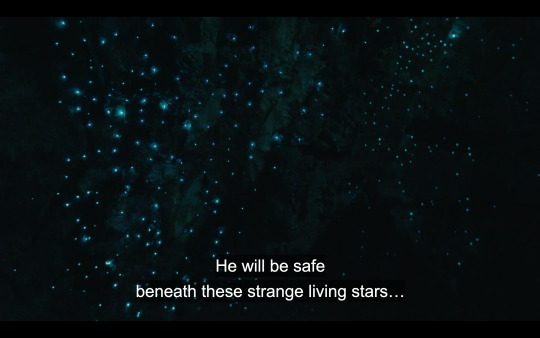
WAILING
52 notes
·
View notes
Photo

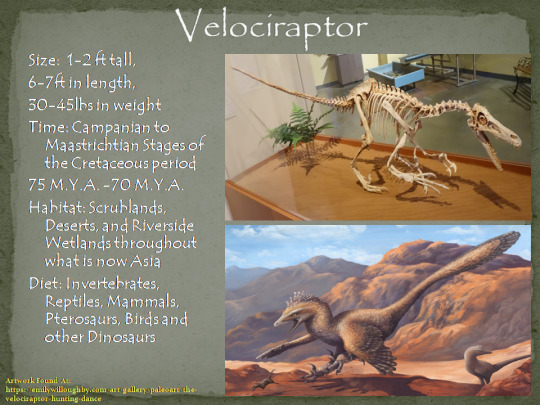
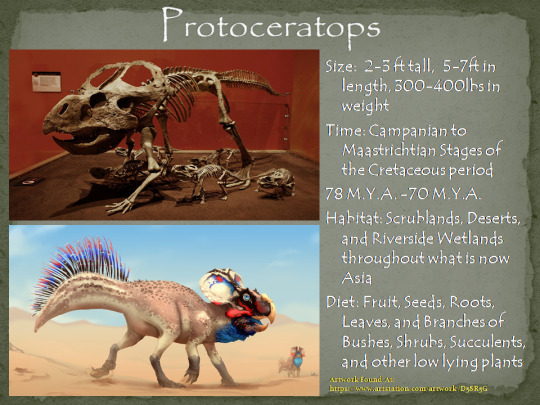

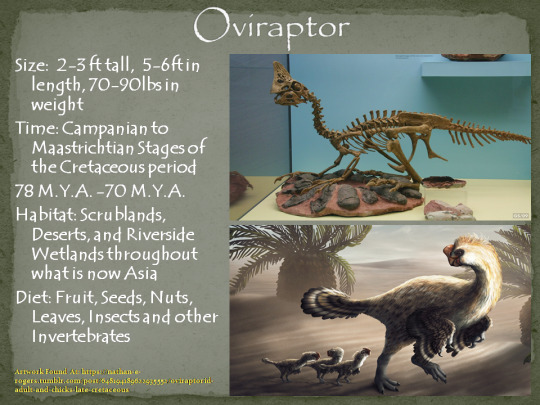
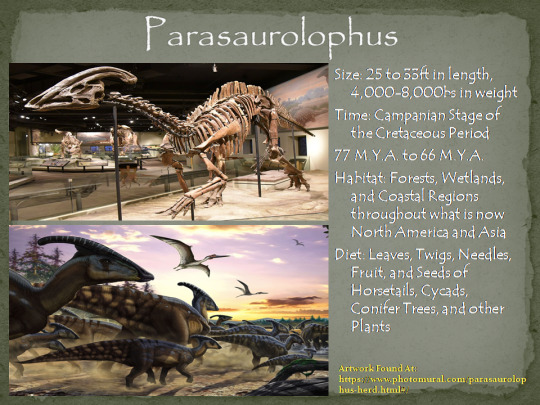

Mesozoic Batch 5
#Mesozoic#pachyrhinosaurus#prehistoric kingdom#dinosaur#dinosaurs#parasaurolophus#gallimimus#protoceratops#oviraptor#velociraptor#antarctopelta
5 notes
·
View notes
Text
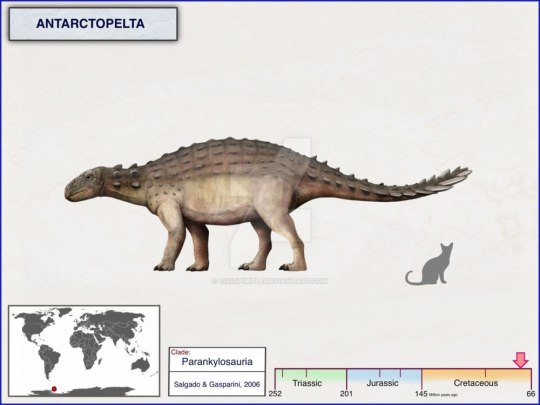
Antarctopelta
Antarctopelta — рід динозаврів-анкілозаврів з одним відомим видом, A. oliveroi, який мешкав в Антарктиді в пізньому крейдовому періоді. Це був анкілозавр середнього розміру, що досягав не більше 4 метрів у довжину, і демонстрував характеристики двох різних родин, що ускладнило більш точну класифікацію. Єдиний відомий викопний зразок був виявлений на острові Джеймса Росса в 1986 році,…
Повний текст на сайті "Вимерлий світ":
https://extinctworld.in.ua/antarctopelta/
#antarctopelta#antarctica#dinosaur#ankylosaurus#cretaceous#ankylosauridae#paleoart#late cretaceous#dinosaurs#paleontology#prehistoric#science#animals#extinct#illustration#creatures#scientific#fossils#prehistory#daily#палеонтологія#палеоарт#ukraine#ukrainian#україна#тварини#українська мова#art#tumblr
6 notes
·
View notes
Note
you like dinos? name every dino
Aardonyx Abdarainurus Abelisaurus Abrictosaurus Abrosaurus Abydosaurus Acantholipan Acanthopholis Achelousaurus Acheroraptor Achillesaurus Achillobator Acristavus Acrocanthosaurus Acrotholus Adamantisaurus Adasaurus Adelolophus Adeopapposaurus Adratiklit Adynomosaurus Aegyptosaurus Aeolosaurus Aeolosaurus Aepyornithomimus Aerosteon Afromimus Afrovenator Agathaumas Agilisaurus Agrosaurus Agujaceratops Agujaceratops Agustinia Ahshislepelta Ajkaceratops Ajnabia Akainacephalus Alamitornis Alaskacephale Albalophosaurus Albertaceratops Albertadromeus Albertavenator Albertonykus Albertosaurus Albinykus Alcmonavis Alcovasaurus Alectrosaurus Aletopelta Algoasaurus Alioramus Alioramus Allosaurus Allosaurus Allosaurus Almas Alnashetri Altirhinus Altispinax Alvarezsaurus Alxasaurus Amanzia Amargasaurus Amargatitanis Amazonsaurus Ambiortus Ambopteryx Ampelosaurus Amphicoelias Amtocephale Amurosaurus Amygdalodon Anabisetia Analong Anasazisaurus Anchiceratops Anchiornis Anchisaurus Andesaurus Angolatitan Angulomastacator Anhuilong Aniksosaurus Animantarx Ankylosaurus Anodontosaurus Anomalipes Anoplosaurus Anserimimus Antarcticavis Antarctopelta Antarctosaurus Antarctosaurus Antarctosaurus Antarctosaurus Antetonitrus Antrodemus Anzu Aoniraptor Aorun Apatoraptor Apatornis Apatosaurus Apatosaurus Appalachiosaurus Apsaravis Aquilarhinus Aquilops Arackar Aragosaurus Aralosaurus Aratasaurus Archaeoceratops Archaeoceratops Archaeodontosaurus Archaeopteryx Archaeopteryx Archaeorhynchus Archaeornithoides Archaeornithomimus Archaeornithomimus Archaeornithura Arcovenator Arcusaurus Arenysaurus Argentinosaurus Argyrosaurus Aristosuchus Arkansaurus Arkharavia Arrhinoceratops Arrudatitan Asfaltovenator Asiaceratops Asiaceratops Asiahesperornis Asiatosaurus Asiatosaurus Astrophocaudia Asylosaurus Atacamatitan Atlantosaurus Atlantosaurus Atlasaurus Atlascopcosaurus Atrociraptor Atsinganosaurus Aublysodon Aucasaurus Augustynolophus Auroraceratops Aurornis Australodocus Australotitan Australovenator Austrocheirus Austroposeidon Austroraptor Austrosaurus Avaceratops Aviatyrannis Avimimus Avimimus Avisaurus
Baalsaurus Bactrosaurus Bactrosaurus Bagaceratops Bagaraatan Bagualia Bagualosaurus Bahariasaurus Bainoceratops Bainoceratops Bajadasaurus Balaur Bambiraptor Banji Bannykus Baotianmansaurus Baptornis Barapasaurus Barilium Barosaurus Barrosasaurus Barsboldia Baryonyx Bashanosaurus Batyrosaurus Batyrosaurus Baurutitan Bauxitornis Bayannurosaurus Beg Beibeilong Beiguornis Beipiaognathus Beipiaosaurus Beishanlong Bellusaurus Berberosaurus Berthasaura Bicentenaria Bienosaurus Bissektipelta Bistahieversor Blasisaurus Blikanasaurus Bohaiornis Bolong Boluochia Bonapartenykus Bonapartenykus Bonapartesaurus Bonatitan Bonitasaura Borealopelta Borealosaurus Boreonykus Borogovia Bothriospondylus Brachiosaurus Brachyceratops Brachylophosaurus Brachytrachelopan Bradycneme Brasilotitan Bravasaurus Bravoceratops Breviceratops Brighstoneus Brodavis Brodavis Brodavis Brodavis Brohisaurus Brontomerus Brontosaurus Buitreraptor Burianosaurus Buriolestes Byronosaurus
Caenagnathasia Caenagnathus Caihong Calamosaurus Callovosaurus Camarasaurus Camarasaurus Camarasaurus Camarasaurus Camarillasaurus Camelotia Camposaurus Camptodontornis Camptosaurus Campylodoniscus Canadaga Canardia Carcharodontosaurus Carcharodontosaurus Cardiodon Carnotaurus Caseosaurus Cathartesaura Caudipteryx Caudipteryx Cedarosaurus Cedarpelta Cedrorestes Centrosaurus Ceramornis Cerasinops Ceratonykus Ceratops Ceratosaurus Ceratosaurus Ceratosaurus Ceratosuchops Cerebavis Cetiosauriscus Cetiosaurus Changchengornis Changchunsaurus Changmiania Changyuraptor Changzuiornis Chaoyangia Chaoyangsaurus Charonosaurus Chasmosaurus Chasmosaurus Chasmosaurus Chebsaurus Chenanisaurus Chialingosaurus Chiappeavis Chiayusaurus Chiayusaurus Chilantaisaurus Chilesaurus Chindesaurus Chingkankousaurus Chinshakiangosaurus Chirostenotes Choconsaurus Chondrosteosaurus Chongmingia Choyrodon Chromogisaurus Chuandongocoelurus Chuanjiesaurus Chuanqilong Chubutisaurus Chungkingosaurus Chupkaornis Chuxiongosaurus Cimolopteryx Cimolopteryx Citipati Citipes Claosaurus Coahuilaceratops Coelophysis Coelurus Colepiocephale Coloradisaurus Comahuesaurus Compsognathus Compsosuchus Concavenator Conchoraptor Concornis Condorraptor Confuciusornis Confuciusornis Confuciusornis Confuciusornis Convolosaurus Coronosaurus Corythoraptor Corythosaurus Corythosaurus Craspedodon Craterosaurus Cretaaviculus Crichtonpelta Crichtonsaurus Cristatusaurus Crittendenceratops Cruxicheiros Cryolophosaurus Cumnoria
Dacentrurus Daemonosaurus Dakotadon Dakotaraptor Dalianraptor Daliansaurus Dandakosaurus Daspletosaurus Daspletosaurus Datanglong Datonglong Datousaurus Daurlong Daxiatitan Deinocheirus Deinodon Deinonychus Deltadromeus Demandasaurus Denversaurus Diabloceratops Diamantinasaurus Dicraeosaurus Dilong Dilophosaurus Diluvicursor Dineobellator Dinheirosaurus Diplodocus Diplodocus Diplodocus Dongbeititan Dongyangopelta Dongyangosaurus Draconyx Dracoraptor Dracovenator Dreadnoughtus Dromaeosauroides Dromaeosaurus Dromiceiomimus Drusilasaura Dryosaurus Dryptosaurus Dubreuillosaurus Duriatitan Duriavenator Dynamoterror Dyoplosaurus Dysalotosaurus Dysganus Dysganus Dysganus Dysganus Dyslocosaurus Dzharaonyx Dzharatitanis
Echinodon Edmontonia Edmontonia Edmontosaurus Edmontosaurus Efraasia Einiosaurus Ekrixinatosaurus Elaltitan Elaphrosaurus Elmisaurus Elopteryx Elrhazosaurus Emausaurus Enaliornis Enaliornis Enaliornis Enantiophoenix Enigmosaurus Eoabelisaurus Eocarcharia Eoconfuciusornis Eocursor Eodromaeus Eogranivora Eolambia Eomamenchisaurus Eoraptor Eosinopteryx Eotrachodon Eotriceratops Eotyrannus Eousdryosaurus Epachthosaurus Epanterias Epichirostenotes Epidexipteryx Equijubus Erectopus Erketu Erliansaurus Erlikosaurus Erythrovenator Eshanosaurus Eucamerotus Eucercosaurus Eucnemesaurus Eucnemesaurus Euhelopus Euoplocephalus Europasaurus Europatitan Europelta Euskelosaurus Eustreptospondylus Evgenavis Evgenavis
Falcarius Falcatakely Ferganasaurus Ferrisaurus Foraminacephale Fosterovenator Fostoria Fruitadens Fukuipteryx Fukuiraptor Fukuisaurus Fukuititan Fukuivenator Fulgurotherium Fumicollis Fushanosaurus Fusuisaurus Futalognkosaurus Fylax
Galeamopus Galeamopus Galleonosaurus Gallimimus Gallornis Galvesaurus Gannansaurus Gansus Gansus Ganzhousaurus Gargantuavis Gargoyleosaurus Garrigatitan Garudimimus Gasosaurus Gasparinisaura Gastonia Gastonia Geminiraptor Genusaurus Genyodectes Geranosaurus Gettyia Gideonmantellia Giganotosaurus Gigantoraptor Gigantspinosaurus Gilmoreosaurus Gilmoreosaurus Gilmoreosaurus Gilmoreosaurus Giraffatitan Glacialisaurus Glishades Glyptodontopelta Gnathovorax Gobihadros Gobioolithus Gobioolithus Gobipteryx Gobiraptor Gobisaurus Gobititan Gobivenator Gojirasaurus Gondwanatitan Gongpoquansaurus Gongxianosaurus Gorgosaurus Goyocephale Graciliceratops Graciliraptor Gravitholus Gryphoceratops Gryposaurus Gryposaurus Gryposaurus Gryposaurus Guaibasaurus Gualicho Guanlong Guemesia
Hadrosaurus Haestasaurus Hagryphus Halimornis Halszkaraptor Hamititan Hanssuesia Haplocanthosaurus Haplocanthosaurus Haplocheirus Harpymimus Haya Heptasteornis Herrerasaurus Hesperonychus Hesperornis Hesperornis Hesperornis Hesperornis Hesperornis Hesperornis Hesperornis Hesperornis Hesperornis Hesperornis Hesperornis Hesperornithoides Hesperosaurus Heterodontosaurus Hexing Hexinlusaurus Heyuannia Hippodraco Histriasaurus Hollanda Homalocephale Hongshanornis Hoplitosaurus Horshamosaurus Hortalotarsus Huabeisaurus Hualianceratops Huallasaurus Huanansaurus Huanghetitan Huangshanlong Huaxiagnathus Huayangosaurus Hudiesaurus Huehuecanauhtlus Huinculsaurus Hulsanpes Hungarosaurus Hylaeosaurus Hypacrosaurus Hypacrosaurus Hypselosaurus Hypselospinus Hypsilophodon
Iaceornis Iberospinus Ibirania Ichthyornis Ichthyovenator Ignavusaurus Iguanacolossus Iguanodon Iguanodon Iguanodon Ilokelesia Imperobator Incisivosaurus Indosaurus Indosuchus Ingentia Intiornis Invictarx Irisosaurus Irritator Isaberrysaura Isanosaurus Isasicursor Ischioceratops Isisaurus Issi Itapeuasaurus Itemirus Iuticosaurus Iyuku
Jainosaurus Jakapil Jaklapallisaurus Janenschia Jaxartosaurus Jeholornis Jeholornis Jeholornis Jeholosaurus Jeyawati Jianchangornis Jianchangosaurus Jiangjunosaurus Jiangshanosaurus Jiangxisaurus Jianianhualong Jibeinia Jinbeisaurus Jinfengopteryx Jingshanosaurus Jinguofortis Jintasaurus Jinyunpelta Jinzhousaurus Jiuquanornis Jiutaisaurus Jixiangornis Jobaria Judiceratops Judinornis Juratyrant Juravenator
Kaatedocus Kaijiangosaurus Kaijutitan Kakuru Kamuysaurus Kangnasaurus Kansaignathus Kaririavis Karongasaurus Katepensaurus Kayentavenator Kazaklambia Kelmayisaurus Kelumapusaura Kentrosaurus Kerberosaurus Khaan Khinganornis Kholumolumo Khulsanurus Kileskus Kinnareemimus Klamelisaurus Kol Kompsornis Kookne Koparion Koreaceratops Koreanosaurus Koshisaurus Kosmoceratops Kotasaurus Kritosaurus Kryptops Kulceratops Kulindadromeus Kunbarrasaurus Kundurosaurus Kuru Kurupi Kuszholia
Labocania Laevisuchus Laiyangosaurus Lajasvenator Lamarqueavis Lamarqueavis Lamarqueavis Lambeosaurus Lambeosaurus Lambeosaurus Lanzhousaurus Lapampasaurus Laplatasaurus Lapparentosaurus Laquintasaura Latenivenatrix Latirhinus Latirhinus Lavocatisaurus Leaellynasaura Ledumahadi Leinkupal Leonerasaurus Lepidus Leptoceratops Leptorhynchos Leshansaurus Lesothosaurus Lessemsaurus Levnesovia Lexovisaurus Leyesaurus Liaoceratops Liaoningosaurus Liaoningotitan Liaoningvenator Ligabueino Ligabuesaurus Liliensternus Limaysaurus Limenavis Limusaurus Lingwulong Lingyuanosaurus Linhenykus Linheraptor Linhevenator Lirainosaurus Liubangosaurus Llukalkan Lohuecotitan Longicrusavis Longipteryx Longirostravis Longusunguis Lophorhothon Lophostropheus Loricatosaurus Losillasaurus Lourinhasaurus Luanchuanraptor Lucianovenator Lufengosaurus Lufengosaurus Luoyanggia Lurdusaurus Lusotitan Lusovenator Lycorhinus Lythronax
Maaqwi Machairasaurus Machairoceratops Macrocollum Macrogryphosaurus Macrurosaurus Macrurosaurus Magnamanus Magnapaulia Magnosaurus Magyarosaurus Magyarosaurus Mahakala Mahuidacursor Maiasaura Maip Majungasaurus Malarguesaurus Malawisaurus Maleevus Mamenchisaurus Mamenchisaurus Mamenchisaurus Mamenchisaurus Mamenchisaurus Mamenchisaurus Manidens Mantellisaurus Mapusaurus Maraapunisaurus Marmarospondylus Marshosaurus Martharaptor Masiakasaurus Massospondylus Massospondylus Matheronodon Maxakalisaurus Mbiresaurus Medusaceratops Megalosaurus Megapnosaurus Megapnosaurus Megaraptor Mei Melanorosaurus Mendozasaurus Menefeeceratops Mengciusornis Menucocelsior Meraxes Mercuriceratops Meroktenos Metriacanthosaurus Microceratus Microceratus Micropachycephalosaurus Microraptor Microraptor Microraptor Microvenator Mierasaurus Minmi Minotaurasaurus Miragaia Mirarce Mirischia Mnyamawamtuka Moabosaurus Mochlodon Mochlodon Mongolostegus Monkonosaurus Monolophosaurus Mononykus Montanoceratops Morelladon Moros Morrosaurus Mosaiceratops Murusraptor Mussaurus Muttaburrasaurus Muyelensaurus Mymoorapelta Mystiornis
Naashoibitosaurus Nambalia Nankangia Nanningosaurus Nanosaurus Nanshiungosaurus Nanuqsaurus Nanyangosaurus Narambuenatitan Narindasaurus Nasutoceratops Natovenator Navajoceratops Nebulasaurus Nedcolbertia Nedoceratops Neimongosaurus Nemegtomaia Nemegtonykus Neogaeornis Neosodon Neovenator Neuquenornis Neuquenraptor Ngwevu Nhandumirim Niebla Nigersaurus Ningyuansaurus Ninjatitan Niobrarasaurus Nipponosaurus Noasaurus Nodocephalosaurus Nodosaurus Nomingia Nopcsaspondylus Normanniasaurus Notatesseraeraptor Nothronychus Notoceratops Notocolossus Notohypsilophodon Nqwebasaurus Nullotitan Nuthetes
Oceanotitan Ohmdenosaurus Ojoceratops Ojoraptorsaurus Oksoko Olorotitan Omeisaurus Omeisaurus Omeisaurus Omeisaurus Omeisaurus Omeisaurus Omeisaurus Omeisaurus Omnivoropteryx Ondogurvel Oohkotokia Oplosaurus Orkoraptor Ornatops Ornitholestes Ornithomimus Ornithomimus Ornithomimus Ornithopsis Orodromeus Orthomerus Oryctodromeus Osmakasaurus Ostafrikasaurus Ostromia Ouranosaurus Overoraptor Overosaurus Oviraptor Owenodon Oxalaia Ozraptor
Pachycephalosaurus Pachyrhinosaurus Pachyrhinosaurus Pachyrhinosaurus Padillasaurus Palaeopteryx Palintropus Paludititan Pampadromaeus Pamparaptor Panamericansaurus Pandoravenator Panguraptor Panoplosaurus Panphagia Pantydraco Papiliovenator Parabohaiornis Parahesperornis Parahesperornis Parahongshanornis Paralitherizinosaurus Paranthodon Parapengornis Pararhabdodon Parasaurolophus Parasaurolophus Parasaurolophus Paraxenisaurus Pareisactus Parksosaurus Paronychodon Paronychodon Parvicursor Pasquiaornis Pasquiaornis Patagonykus Patagonykus Patagopteryx Patagosaurus Patagotitan Pawpawsaurus Pectinodon Pedopenna Pegomastax Pelecanimimus Pellegrinisaurus Peloroplites Pelorosaurus Pendraig Penelopognathus Pengornis Pentaceratops Perijasaurus Petrobrasaurus Phaedrolosaurus Philovenator Phuwiangosaurus Phuwiangvenator Phyllodon Piatnitzkysaurus Pilmatueia Pinacosaurus Pinacosaurus Piscivoravis Pitekunsaurus Piveteausaurus Planicoxa Plateosaurus Plateosaurus Plateosaurus Platypelta Plesiohadros Pneumatoraptor Poekilopleuron Polacanthus Polarornis Polyodontosaurus Polyonax Potamornis Powellvenator Pradhania Prenocephale Prenoceratops Priconodon Proa Probactrosaurus Probrachylophosaurus Proceratosaurus Procompsognathus Proornis Propanoplosaurus Prosaurolophus Protarchaeopteryx Protoceratops Protoceratops Protognathosaurus Protohadros Psittacosaurus Psittacosaurus Psittacosaurus Psittacosaurus Psittacosaurus Psittacosaurus Psittacosaurus Psittacosaurus Psittacosaurus Psittacosaurus Psittacosaurus Psittacosaurus Pterospondylus Puertasaurus Pukyongosaurus Pulanesaura Punatitan Pycnonemosaurus Pyroraptor
Qantassaurus Qianzhousaurus Qiaowanlong Qijianglong Qinlingosaurus Qiupalong Qiupanykus Quetecsaurus Quilmesaurus
Rahiolisaurus Rahonavis Rajasaurus Rapator Rapaxavis Rapetosaurus Raptorex Ratchasimasaurus Rativates Rayososaurus Rebbachisaurus Regaliceratops Regnosaurus Rhabdodon Rhabdodon Rhadinosaurus Rhinorex Rhoetosaurus Rhomaleopakhus Riabininohadros Rinchenia Rinconsaurus Riojasaurus Riparovenator Rugocaudia Rugops Rukwatitan Ruyangosaurus
Sahaliyania Saichania Saltriovenator Sanjuansaurus Sanpasaurus Santanaraptor Sanxiasaurus Sapeornis Sarahsaurus Sarcosaurus Sarmientosaurus Saturnalia Saurolophus Saurolophus Sauroniops Sauropelta Saurophaganax Sauroplites Sauroposeidon Saurornithoides Saurornitholestes Saurornitholestes Savannasaurus Scansoriopteryx Scelidosaurus Schizooura Schleitheimia Scipionyx Sciurumimus Scolosaurus Scolosaurus Scutellosaurus Secernosaurus Sefapanosaurus Segisaurus Segnosaurus Seitaad Sektensaurus Serendipaceratops Serikornis Shamosaurus Shanag Shantungosaurus Shanweiniao Shanxia Shanyangosaurus Shaochilong Shengjingornis Shenqiornis Shenzhousaurus Shidaisaurus Shingopana Shishugounykus Shixinggia Shri Shuangbaisaurus Shuangmiaosaurus Shunosaurus Shuvuuia Siamodon Siamosaurus Siamotyrannus Siamraptor Siats Sibirotitan Sierraceratops Sigilmassasaurus Silvisaurus Similicaudipteryx Sinocalliopteryx Sinocephale Sinoceratops Sinornithoides Sinornithomimus Sinornithosaurus Sinornithosaurus Sinosauropteryx Sinosaurus Sinosaurus Sinotyrannus Sinovenator Sinraptor Sinraptor Sinusonasus Sirindhorna Skorpiovenator Smitanosaurus Songlingornis Sonidosaurus Sonorasaurus Soriatitan Soroavisaurus Spectrovenator Sphaerotholus Sphaerotholus Sphaerotholus Spiclypeus Spinophorosaurus Spinops Spinosaurus Spinostropheus Staurikosaurus Stegoceras Stegoceras Stegopelta Stegosaurus Stegosaurus Stegosaurus Stegouros Stellasaurus Stenonychosaurus Stenopelix Stokesosaurus Streptospondylus Struthiomimus Struthiosaurus Struthiosaurus Struthiosaurus Styracosaurus Styracosaurus Suchomimus Suchosaurus Suchosaurus Sulcavis Supersaurus Suskityrannus Suuwassea Suzhousaurus Syngonosaurus Szechuanosaurus
Tachiraptor Talarurus Talenkauen Talos Tamarro Tambatitanis Tangvayosaurus Tanius Tanius Tanycolagreus Taohelong Tapuiasaurus Tarbosaurus Tarchia Tarchia Tarchia Tastavinsaurus Tatankacephalus Tataouinea Tatisaurus Taurovenator Tawa Tazoudasaurus Tehuelchesaurus Telmatosaurus Tendaguria Tengrisaurus Tenontosaurus Tenontosaurus Teratophoneus Terminocavus Tethyshadros Texacephale Texasetes Thanatotheristes Thanos Thecocoelurus Thecodontosaurus Theiophytalia Therizinosaurus Thescelosaurus Tianyulong Tianyuornis Tianyuraptor Tianzhenosaurus Tienshanosaurus Timimus Timurlengia Tingmiatornis Titanoceratops Titanosaurus Titanosaurus Tlatolophus Tochisaurus Tonganosaurus Tongtianlong Tornieria Torosaurus Torosaurus Torvosaurus Torvosaurus Torvosaurus Tototlmimus Tralkasaurus Transylvanosaurus Tratayenia Traukutitan Triceratops Triceratops Trierarchuncus Trigonosaurus Trinisaura Triunfosaurus Troodon Tsaagan Tsagantegia Tsintaosaurus Tuebingosaurus Tugulusaurus Tuojiangosaurus Turanoceratops Turiasaurus Tylocephale Tyrannosaurus Tyrannotitan
Uberabatitan Ubirajara Udanoceratops Ultrasaurus Ulughbegsaurus Unaysaurus Unenlagia Unenlagia Unescoceratops Unquillosaurus Urbacodon Utahceratops Utahraptor Uteodon
Vahiny Valdoraptor Valdosaurus Vallibonavenatrix Variraptor Vayuraptor Vectaerovenator Vectiraptor Vegavis Velafrons Velocipes Velociraptor Velociraptor Velocisaurus Venenosaurus Vescornis Vespersaurus Veterupristisaurus Viavenator Vitakridrinda Volgatitan Volkheimeria Vorona Vouivria Vulcanodon
Wakinosaurus Walgettosuchus Wamweracaudia Wannanosaurus Weewarrasaurus Wellnhoferia Wendiceratops Wiehenvenator Wintonotitan Wuerhosaurus Wuerhosaurus Wulagasaurus Wulatelong Wulong
Xenoceratops Xenoposeidon Xenotarsosaurus Xianshanosaurus Xiaosaurus Xiaotingia Xingtianosaurus Xingxiulong Xinjiangovenator Xinjiangtitan Xiongguanlong Xixianykus Xixiasaurus Xiyunykus Xuanhanosaurus Xuanhuaceratops Xunmenglong Xuwulong
Yamaceratops Yamatosaurus Yandangornis Yangavis Yangchuanosaurus Yangchuanosaurus Yanornis Yanornis Yaverlandia Yehuecauhceratops Yi Yimenosaurus Yingshanosaurus Yinlong Yixianornis Yixianosaurus Yizhousaurus Yongjinglong Ypupiara Yuanchuavis Yuanmousaurus Yueosaurus Yulong Yunganglong Yunmenglong Yunnanosaurus Yunnanosaurus Yunnanosaurus Yunyangosaurus Yurgovuchia Yutyrannus Yuxisaurus
Zalmoxes Zalmoxes Zanabazar Zapalasaurus Zaraapelta Zby Zephyrosaurus Zhanghenglong Zhenyuanlong Zhongjianornis Zhongjianosaurus Zhongornis Zhongyuansaurus Zhouornis Zhuchengceratops Zhuchengtyrannus Ziapelta Zigongosaurus Zizhongosaurus Zuniceratops Zuolong Zuoyunlong Zupaysaurus Zuul
455 notes
·
View notes
Text
Round Two: Stegouros vs Spicomellus
Stegouros elengassen
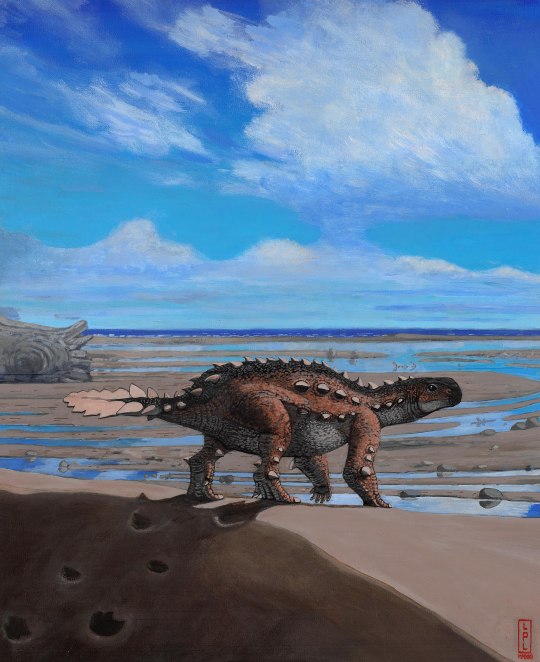
Artwork by Luis Enrique Pérez López, written by @zygodactylus
Name Meaning: Armored Creature with a Roofed Tail
Time: 74.9 to 71.7 million years ago (Campanian to Maastrichtian stages of the Late Cretaceous)
Location: Dorotea Formation, Patagonia, Chile
South America is just where the nonavian dinosaur party is happening these days! Stegouros is another recently described species from this continent, and another weird one - it was an Ankylosaur, but not a Nodosaur or an Ankylosaurid, and more to the point, instead of a tail club it had a series of vertebrae enclosed in osteoderms, in a shape that looked a lot like a macuahuitl - the tail was also very short, shorter than any other Thyreophoran, with flattened vertebrae coming together to form the strange and distinctive shape (similar short vertebrae are known from its relative, Antarctopelta). At around 2 meters long, it was very small for an Ankylosaur, though it had a head that was quite large for its body. It also had inward curving teeth, making them look vaguely hourglass-shaped, though they were also asymmetrical. It had many typical ankylosaur traits, but also some stegosaurian ones such as hollow sides to their vertebrae. Overall, it was very similar in proportions and appearance to Antarctopelta, indicating Antarctopelta may have looked more like Stegouros than previously thought. It had limb bones similar to cursorial Ankylosaurs, indicating Stegouros itself was a fast and efficient mover; and it even had claws shaped like hooves which may have enabled even more efficient running and locomotion. So, yeah. A short big headed ankylosaur built for running with a freaking ax on its tail. That’s normal! Living in the Dorotea Formation, Stegouros probably lived near the coast, alongside different sorts of mammals, fish, bivalves, amphibians, plesiosaurs, turtles, and unnamed dinosaurs such as opposite birds, megaraptors, Unenlagiines, and possible titanosaurs.
Spicomellus afer
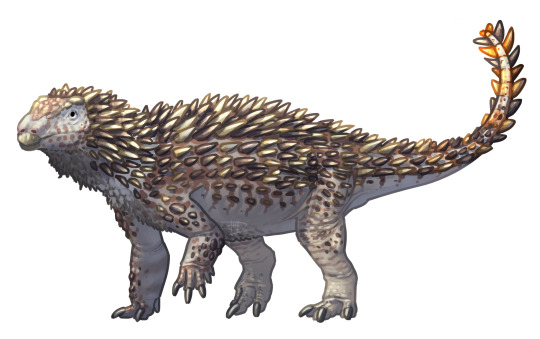
Artwork by @i-draws-dinosaurs, written by @zygodactylus
Name Meaning: African Collar of Spikes
Time: 168 to 164 million years ago (Bathonian to Callovian stages of the Middle Jurassic)
Location: Third Subunit, El Mers Group, Fès-Meknès, Morocco
Spicomellus is the oldest known Ankylosaur, and also the first described Ankylosaur from North Africa! But that isn’t even the weirdest thing about it! Spicomellus had dermal spikes, fused to the bone, forming a collar (for which it was named) around its neck. Given that the spike were fused to the underlying bone - something no other ankylosaur does - it is probable that it wouldn’t have had a particularly flexible neck, or an easy time moving in general if the pattern continued throughout the body. It probably would have been around 3 meter long at the most, similar in size to other ankylosaurs from the Middle Jurassic. Coming from the El Mers Group, i tlived alongside Cetiosaurus, the stegosaur Adratiklit, megalosaurs, and teleosaurids. Spicomellus adds to a growing diversity of Jurassic Ankylosaurs, showing how Ankylosaurs and Stegosaurs lived alongside each other for a large period of time (the Middle and Late Jurassic epochs) and that the extinction of the Stegosaurs must have been due to a different, unrelated factor.
#dmm#dinosaur march madness#dinosaurs#birds#dmm rising stars#dmm round two#birblr#palaeoblr#paleontology#bracket#march madness#polls#stegouros#spicomellus
211 notes
·
View notes
Text
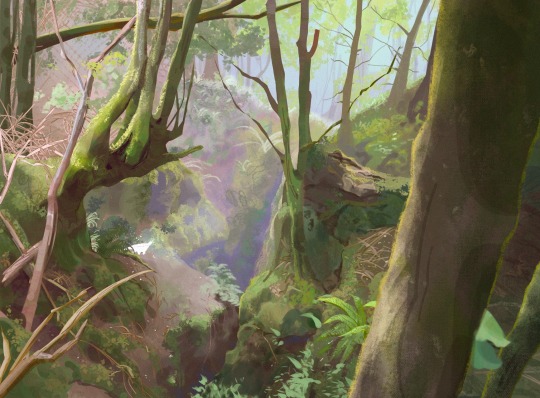
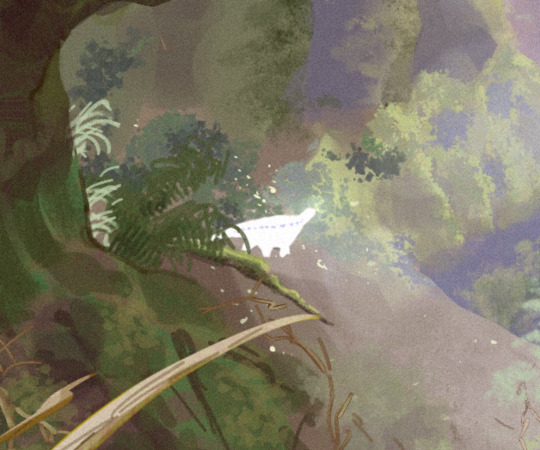
little antarctopelta's journey
redraw based on the scene from prehistoric planet! love this lil guy
#prehistoric planet#skidoodle#art#the shots on this lil guy's scene are so ethereal i love em#and glad for once theyre not bullying a baby dino ajxjsnxjd
277 notes
·
View notes
Note
Personally I find it kinda strange that the Antarctopelta in Prehistoric Planet don't have the macuahuitl club that got inferred from Stegouros. An oversight or would juveniles not have had them?
For those who don't know, Stegouros elengassen is a new species of ankylosaur from Chile, named in 2021! It is closely related to the Antarctopelta featured in Prehistoric Planet, and has a completely unique tail weapon made of many sharp plates that's been nicknamed a "macahuitl tail" after its resemblance to the Aztec weapon.
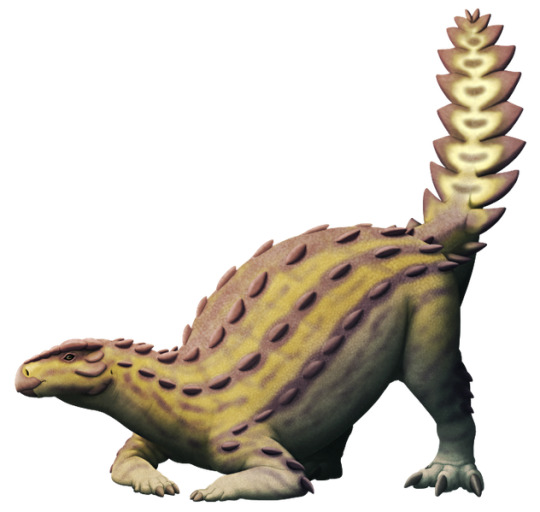
(Art by @alphynix)
To answer your question, Stegouros was literally published exactly six months ago today! Prehistoric Planet was well into production at that point, it's just a case of new research coming out probably after the designs were already finalised! Science Marches On even before the show was out.
Also, given the diversity of ankylosaur tail weaponry it's not necessarily a given that Antarctopelta also had a macahuitl tail. It's a possibility, but it's not certain, especially given there's also no evidence of a macahuitl tail in their other close relative Kunbarrasaurus.
So yeah not so much a mistake or oversight as "this probably wasn't published in time to influence the Antarctopelta design"
#prehistoric planet#prehistoric planet spoilers#dinosaurs#paleontology#paleoart#paleomedia#palaeoblr
257 notes
·
View notes
Text
While the Prehistoric Planet hype is still alive, I might as well express my desire for more and say what I'd personally love to see if they did a Season 3. I’ll put this under the cut because it’s a lot lol.
First thing's first, I'm going to be operating under the assumption we will be following the same format and setting, ie a few segments per episode set in the Masstrichtian stage of the Cretaceous with some loose overarching theme. I need to keep myself grounded in SOMETHING.
So first thing: I've already made fun of "North America" being the title of episode 2.5. What would fix this? If Season 3 did episodes centred on the other continents, of course! South America, Africa, Asia, Europe and... oh uh this might be a bit trickier. Specifically, where do Oceania and Antarctica go? Honestly, just do a vague "East Gondwana" episode for Madagascar, India, Antarctica and Zealandia.
"But we never saw anything from Appalachia!" True. Some generic "Islands 2" or "subcontinents" episode? But Antarctica isn't a subcontinent... maybe some "Atlantic" episode to combine with the European islands? Point is, it would still be messy. This isn't even my main idea, just a vague thought on how to structure Season 3 plus being salty that America gets its own episode (there weren't even any Canadian creatures lol).
OKAY enough fucking around, let's get to what I actually WANT to talk about, the stuff I'd actually want to see. Bring on the list!
Megaraptorids. We've seen representatives of all the large predatory theropods... except megaraptorids. A strange unique group of predators we don't even know where they fit in dinosaur cladistics, but seemed to be important in South American ecosystems. Orkoraptor actually comes from the same place as Dreadnoughtus so there's an easy excuse already, but I think it would be even more exciting to consider Maip. The size of this thing pretty much confirms they were apex predators, so definitely worth considering.
More notosuchians. It's wild how diverse they were, Simosuchus is just one of many species worth showing. Might as well mention Baurusuchids in particular, especially since they seem to have become significant predators in parts of South America. Dinosaur hunting crocs, guys.
Honestly? I'm down for crocodyliformes in general. Show us dyrosaurs in the seas, and even Eusuchians. Similar to modern crocs like Shamosuchus in Swamps, or something different like the more terrestrial Allodaposuchus.
More Europe weirdness! Whether it be Hateg fauna or stuff we know from other parts of the continent, I think people don't realise how unusual those ecosystems were, especially compared to Laurasia in general. Maybe I just want to see Magyarosaurus in detail, but also think about how Abelisaurs seem to be prominent terrestrial predators, for example? Also all the strange birds like Gargantuavis and maybe Balaur. Also, Asteriornis I see a lot of hype for. ;P
On a similar note, more stuff from Africa could be nice, especially terrestrial fauna! We know dinosaurs from Ouled Abdoun, which had fauna featured in Coasts and Deserts, and it's worth considering especially because you kind of see how some of these animals' ancestors may have led to similar species in nearby Europe. Also, if they ever further described more remains from the continent like that giant Kenyan abelisaur, that could provide cool opportunities.
This is a bit more out of left field but: non-ceratopsid ceratopsians. Leptoceratopsids, and even Protoceratopsids (hey, we have Velociraptor, we can make that stretch). Show how they're different from say Triceratops.
More non-hadrosaur ornithopods. Whether it be Thescelosaurus, more rhabdodontids, or some good ol Elasmarians from the Southern continents, I'd be down.
More India stuff is always fun, Deccan Traps FTW, could show other animals like noasaurs for that matter too.
Also Parankylosaurs, whether it be Stegouros with the macuahuitl, or an updated Antarctopelta (more Antarctica FTW).
Basically, even in terms of dinosaurs, show more stuff you've yet to do. Nodosaurs, Halzkaraptorines (again, see Velociraptor), heck even more of some groups we only briefly saw eg Alvarezsaurs and Pachycephalosaurs.
Honestly? More birds would be cool in general. I know we don't know much about a lot of them like Enantiornithines, but we could still try showing what we do know.
In terms of more familiar and recognisable stuff? I mean, you can't go wrong with well known species, but this is me wishing for stuff that's new. :P I will say though, if you want big names, we still haven't seen Ankylosaurus or Gallimimus...
Hmm, we haven't seen choristoderes, have we? In terms of other reptiles, not much comes to mind, nice we got to see Madtsoia in Islands at least.
Honestly more mammals could be fun. I'm pretty sure we have members of every modern group from the Maastrichtian somewhere (even monotremes, Patagorhynchus was recently described). Also diversity of lifestyles too.
Appalachia. More North America, but we see how life evolved somewhat differently on the eastern side of the continent and how it likely lacked some of the more recognisable animals we know from Laramidia.
I don't know enough about other groups to comment, so I'll leave it at that. Definitely got quite extensive, but honestly I'm all for exploring new places. Hell, look into invertebrates and fish I know heck all about (hmm I'm sure there's some cool sharks, right?).
Anyway, time to address the elephant in the room. What if the next season left the Maastrichtian, or we got a spin-off that did that? Well, I do have thoughts on that. For that, I could easily be SUPER biased and just name stuff that I personally want to see, but I think you'd need to think from the perspective of the higher ups too. In other words, what's gonna get the most eyes on the show? There's that, and also how well known the information of that time is, as well as considering things like cost and practicality. The Maastrichtian was chosen because it filled all three of those needs. You have iconic and charismatic species like T. rex, the Maastrichtian is very well studied and has sites from almost every continent, and because it's the closest to today, it's the easiest to film for.
I don't really know anything that would fit these three needs perfectly, ESPECIALLY in terms of filming locations (unless they wanna go majority CG, which I wouldn't mind personally but I know the production team likes real locations because of what they add to the show). But anyway, I have two possible eras as my main choices if they choose to do a similar kind of show: the Late Jurassic epoch (I'd name a specific stage but I don't know enough about them lol), and the Cenomanian stage at the start of the Late Cretaceous.
For the Late Jurassic (insert chosen stage of it here), you have a lot to work with. You have all the other most iconic traditional staple dinosaurs like Stegosaurus, Brontosaurus, Brachiosaurus and well known contemporaries like Diplodocus, Allosaurus, etc. In fact, the Morrison Formation is the main reason I opted for a Late Jurassic option. Sure, it does cover quite a bit of time, but we've seen Prehistoric Planet already take liberties with a six million year time span.
I think my main worry would be that some of the ecosystems on different continents might seem a bit similar, but honestly I doubt anyone would care too much. Plus, you have Asia with slightly different dinosaur groups, and Europe with their island ecosystems (eg Solnhofen). So even if it would be harder to film and some of the best locales for data are in more concentrated areas, I think there's enough to justify it. Also, novelty of early birds and birdlike dinos like Archaeopteryx.
As for the Cenomanian, you already have an easier time filming because angiosperms are now widespread, and you do have data from every continent. And while it doesn't have so many iconic species, there are a few, and some very charismatic animals to explore. Like, you have some of the biggest titanosaurs like Argentinosaurus. Massive Giganotosaurins who are built for hunting large sauropods. Everyone's favourite dinosaur, Spinosaurus. And again, stuff from almost every continent. Like, you could even have freaking Australia show up! Winton Formation is Cenomanian, so it could join the showcases of Africa, South America and others (I don't know so much about Cenomanian Laurasian fauna RIP). And while it would be true for the Late Jurassic as well, this time had especially peculiar nondinosaurs coexisting. Strange mammals. Giant freshwater fish. More unusual crocs. Even the earliest mosasaurs, all while ichthyosaurs and pliosaurs still existed. Basically, even if a layperson might only know Spinosaurus and Giganotosaurus from this time, you still have loads to potentially awe people with.
Anyway, that's a wrap on that. I have no clue what to expect for the future of Prehistoric Planet or what other upcoming palaeo docs will be like, but it's always fun to speculate!
16 notes
·
View notes
Text
Finally got to watch Prehistoric Planet and here are my highlights:
-single dad T. rex
-monosaurus spa day
-weird neck sacs on sauropods for mating display
-quetzlcautlus being a dirty filthy egg cannibal
-slow mo shot of dung plopping and dissolving in water
-tarbosaurus showing up at the oasis and ruining everyone’s vibe
-mononykus being goddamn adorable with a barn owl face
-time for crab
-make love not war tasteful T. Rex softporn
-seriously giant frog eats a baby dinosaur
-ornithomimus with chad hair
-the hadrosaur baby made it out of the river 😭
-angsty antarctopelta leaves his brothers to claim a bioluminescent cave
-pachyrhinosaurs have porcupine quills for some reason
#anyway if you haven’t watched it oh my god watch it#I’m reliving my childhood#nature is truly awesome as in it inspires awe#these creatures used to LIVE here#the world is full of incredible things#how can you see something like this and not just marvel#and props to the animation team like it is drop dead gorgeous and emotive#I have a lot of feelings#tldr; DINOSAURS#prehistoric planet
98 notes
·
View notes
Text
Saturday 4/6/22 - Media Recommendations #34
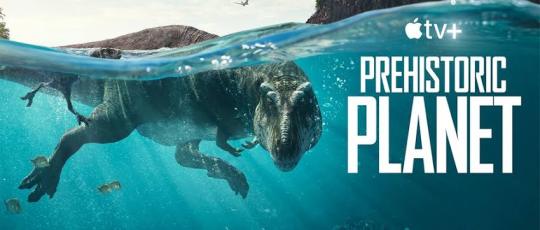
These past few years have been an exciting time for paleo nerds. The revival of the Jurassic franchise has renewed the public's interest in dinosaurs, and new paleontological discoveries such as the revamping of Spinosaurus, and new understandings of behaviour, integument, and taxonomy are coming out every few months.
But there's this disconnect between what the general public thinks of dinosaurs, and what experts and enthusiasts (like myself) understand. Once upon a time, dinosaur nature documentaries were all the rage. Walking With Dinosaurs was a cultural cornerstone of the turn of the century, but it has been a while since any Dino Doco has had anywhere near the same success.

Fast forward to 2022, and Apple TV presents a BBC series in the style of Planet Earth and Blue Planet, but with dinosaurs, called Prehistoric Planet. And I loved it.
Prehistoric Planet
BBC / Jon Favreau / Mike Gunton

The Pitch
Prehistoric Planet is a 5-part nature documentary, each episode about 45 minutes long. Unlike Walking With Dinosaurs, which explored habitats and species across the Mesozoic period, Prehistoric Planet focuses in on the end of the Cretaceous, around 66 million years ago.

Each episode explores biodiversity in a specific type of habitat;
Coasts
Deserts
Freshwater
Ice World
Forests
Rather than follow a group of animals in one specific locale, each episode will jump around different locations around the world that match the episode's theme. Episode 2 for example gives an insight into deserts in South America, North Africa, and East Asia. This formula allows the documentary team to discuss various species from all across the world.

There's fantastic variety in the species chosen to focus in each episode. With the dinosaurs, of course they have to discuss mainstream fan favourites like Tyrannosaurus, Triceratops, and Velociraptor. But they also discuss species not as well known to the public like Nanuqsaurus, Antarctopelta, and even dinosaurs I hadn't heard of until now, like Zalmoxes.

Something I have seen discussed as somewhat unique to this series, is the spotlight on non-dinosaur animals from this period. Plesiosaurs, frogs, primitive birds, Mosasaurs, Ammonites, and most of all, Pterosaurs. Pterosaurs get a great amount of focus in multiple episodes, and from a variety of groups within Pterosauria; aerial expert Nyctosaurs, impressively decorated Pteranodontids, and the gigantic stalking Azdarchids.

And I can't believe I haven't mentioned it yet, but the documentary is narrated by Sir David Attenborough, and that just ties together the whole package.
My Thoughts
As a fan of anything with David Attenborough, this was an immediate sell for me. The tenderness and wonder in David's voice as he details the mundane and exciting of these extinct animals holds your attention firmly.
The special effects used to create the illusion of these animals interacting with their world is stunning; water splashes and flows as animals move through it, snow and sand shifts against them, leaves are brushed aside. It's expertly done.

Every behaviour and design aspect of the dinosaurs, pterosaurs, and the animals they live with is called against direct fossil evidence and further inferred from behaviour and physiology in living animals. Even the most speculative aspects of their design have roots in actual zoology.
Each of the 45 minute episodes are accompanied with a 5 minute behind-the-scenes clip, where palaeontologists who were consulted for the project explain how all decisions made were steeped deeply in real science. These were once living things on this planet, and the way they are depicted, and described by David Attenborough, illustrates this fact.

That last part is probably my favourite aspect of this documentary series, that the dinosaurs and other creatures are treated like animals. They were not blood thirsty monsters that would stop at nothing short of absolute bloodshed. They had families, they would back off if there was too much danger, they were curious about their environment.
It's a shame that dinosaurs have become little more than movie monsters in the eye of today's public, because as Prehistoric Planet shows us, dinosaurs, pterosaurs, and all extinct animals were living things, and they were extraordinary.
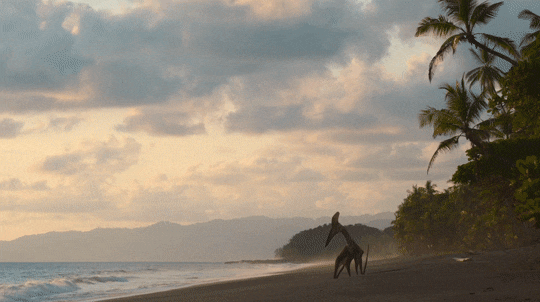
Credit to tumblr user @bluedaddysgirl for all the gifs used in this post
#blog#blogpost#palaeontology#dinosaurs#media recommendations#apple tv#documentary recommendations#prehistoric planet#david attenborough
85 notes
·
View notes
Text
Trying to figure out how a tarot deck with the Major Arcana depicting Prehistoric Planet scenes that I almost certainly will never actually make would work out.
0 - The Fool - Hank and his kids swimming. Not only is it the start of the show, but they’re also setting out on a journey into dangers they don’t know anything of.
1 - The Magician - The Troodontid firestarter.
2 - The High Priestess - Secernosaurus finding their way using the stars.
3 - The Empress - The nesting Quetzalcoatlus.
4 - The Emperor - Tarbosaurus coming for a drink as all the herbivores part for them.
5 - The Hierophant - The Pachyrhinosaurus herd standing together against the Nanuqsauruses.
6 - The Lovers - The ammonites mating.
7 - The Chariot - Baby Triceratops managing to find their way out of the dark
8 - Strength - The adult Therizinosaurus smashing the bee hive. Not only is it presented as a mighty giant, but its actions helping the baby Therizinosaurs reach their goal fits the compassion side of the card.
9 - The Hermit - Deinocheirus.
10 - The Wheel of Fortune - The Velociraptor making off with a pterosaur snack while her comrades are left to deal with the pterosaur swarm.
11 - Justice - The Mosasaurus chasing off his rival. It’s one of the more karmic moments in the show.
12 - The Hanged Man - The Tuarangisaurus giving birth as her family defends her. The Tuarangisauruses defending each other was probably the closest thing to a willing sacrifice depicted in the show and the baby does get born in something resembling a Hanged Man pose.
13 - Death - Atrociraptor and Ankylosaurus using the remnants of the forest fire to their advantage.
14 - Temperance - The trickster Barbarodactylus’s success.
15 - The Devil - Ornithomimus stealing from one another’s nests.
16 - The Tower - The fall of the old Dreadnoughtus.
17 - The Star - Antarctopelta finding a winter den under the light of bioluminescence.
18 - The Moon - The Tyrannosaurus rivals to lovers. The entire segment is full of subverted expectations and illusions.
19 - The Sun - The baby Olorotitan’s triumphant return.
20 - Judgement - The female Carnotaurus watching Ron’s dance.
21 - The World - Hatzegopteryx taking off into the sunset at the very end.
#prehistoric planet#tarot#i'm probably not actually gonna draw these#but it's fun to brainstorm them#sadly there's more scenes than major arcana#so not everyone can get in#sorry snow dromaeosaurs#alcione hatchlings#i had qianzhousaurus as temperance because of her patience bringing her victory before thinking of barbarodactylus temperance#major arcana
54 notes
·
View notes